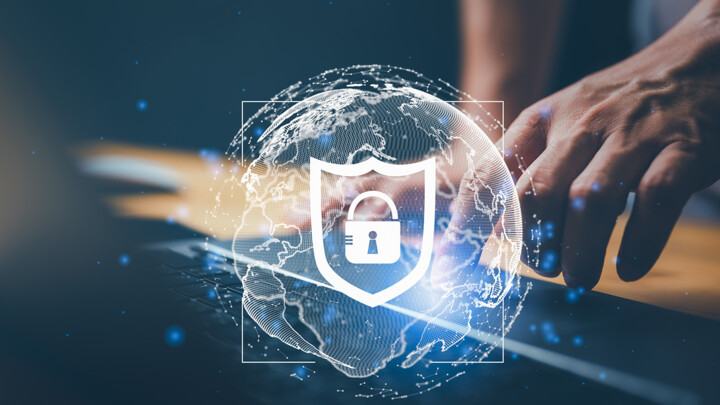Protecting Your Business: Data Security Strategies for Circular IT Hardware
With more companies turning to circular IT hardware as a sustainable solution, Ynvolve’s Thomas Amberg explains why securing data on refurbished systems is vital for protecting sensitive information and maintaining trust.

© Anawat_s | istockphoto.com
As Stephane Nappo (CiSO of SEB group) puts it: “It takes 20 years to build a reputation and a few minutes of cyber-incident to ruin it.” More companies are turning to circular IT hardware as a sustainable and cost-effective alternative, so the question of how to handle data security with these systems becomes even more pressing. While circular IT equipment offers only benefits, in our opinion, we will explore how to effectively secure your data when using circular IT hardware, including best practices for data wiping, securing customer information, and ensuring the integrity of your refurbished equipment.
Understanding the circular IT model
Before diving into data security strategies, it’s important to understand what the circular IT model entails. Unlike the traditional linear approach, where IT equipment is bought, used, and eventually discarded, the circular model focuses on extending the life cycle of hardware through reconditioning, reusing, and recycling. This involves buying back decommissioned IT assets, refurbishing them to like-new condition, and reintroducing them into the market. The goal is to reduce electronic waste, conserve resources, and provide organizations with high-quality IT equipment at a fraction of the cost of new products.
However, the very nature of this model—where hardware has had previous owners—raises concerns about data security. When you purchase refurbished servers or network equipment, how can you be sure that the data from previous owners has been completely erased? And when you decommission your own hardware, how can you ensure that sensitive data doesn’t fall into the wrong hands? These are critical questions that need to be addressed to maintain the integrity of your IT infrastructure and the reputation of your company.
The importance of data wiping in the circular model
The most crucial step in securing data when dealing with circular IT hardware is ensuring that all existing data is thoroughly wiped from the equipment before it is refurbished or resold. Data wiping is the process of securely erasing all data on a device, making it unrecoverable. This is particularly important when buying back decommissioned IT equipment, as any residual data could pose a significant security risk.
Best practices for data wiping
- Use certified data wiping software: When decommissioning IT assets, it’s essential to use certified data wiping software that meets industry standards for secure data erasure. These tools overwrite the existing data multiple times to ensure that it cannot be recovered, even with advanced forensic techniques. Ynvolve for instance is a certified Gold Blancco partner, ensuring secure data wiping for all processed devices.
- Physical destruction for extra security: In cases where data is extremely sensitive, physical destruction of the storage media (such as hard drives) can provide an additional layer of security. This involves shredding or degaussing the media to ensure that the data is permanently destroyed. We wrote a more in-depth article this year about how to choose between data wiping and physical destruction if you’re unsure.
- Verify data erasure: After data wiping is complete, it’s important to verify that all data has been successfully erased. This can be done using data recovery tools to ensure that no residual information remains on the device.
- Maintain a chain of custody: When sending decommissioned equipment to a refurbishing facility, maintain a documented chain of custody to track the hardware and ensure that it is handled securely at all stages of the process.
- Partner with trusted specialists: Work with reputable refurbishers who have a proven track record of secure data wiping. At Ynvolve, for example, with our BuyBack as a Service (BBaaS®) program, we purchase your IT equipment nearing its end-of-life for fair market value. Alternatively, you can leverage our consignment sales expertise to maximize returns on your assets. Our certified technicians ensure safe hardware de-installation and secure and thorough data erasure, providing proof of erasure and drive serial numbers. For devices past their economic life, we facilitate recycling via WEEE-certified partners, following environmental regulations, and issue a certificate of completion.
Securing customer data on refurbished equipment
Once you’ve ensured that your circular IT hardware is free of previous data, the next step is to secure the new data that will be processed and stored on this equipment. This is not specific to circular servers, as all new servers must also follow the same strategies—but just as a quick guideline, we wanted to remind you of a few key points.
Key strategies for securing data
- Regular Security Audits: Conduct regular security audits of IT infrastructure to identify and address any vulnerabilities. This includes checking for outdated firmware, unpatched software, and other potential security gaps.
- Implement Encryption: Encrypt all sensitive data stored on refurbished servers and transmitted over the network. Encryption ensures that even if data is intercepted or accessed without authorization, it cannot be read without the proper decryption key.
- Update and Patch Regularly: Your IT infrastructure requires regular updates and patches to protect against emerging threats. Ensure that your IT team stays on top of the latest security updates and implements them as soon as they become available.
- Network Segmentation: To further protect customer data, consider segmenting your network to isolate sensitive information. By separating different types of data and limiting access to only those who need it, you can reduce the risk of a data breach.
- Access Control: Implement strict access controls to limit who can access your infrastructure and the data stored on it. Use multi-factor authentication (MFA) and role-based access control (RBAC) to ensure that only authorized personnel can access sensitive systems.
- Employee Training: Educate your employees on the importance of data security. Training should cover best practices for data handling, recognizing phishing attempts, and responding to potential security incidents.
As more companies adopt circular IT hardware, ensuring that your infrastructure is secure is not just a necessity but a responsibility. By following best practices for data wiping, partnering with trusted refurbishers, and implementing strong data security strategies, you can confidently embrace the benefits of circular IT without compromising on safety. Remember, securing your IT environment isn’t a one-time task—it’s an ongoing process that requires vigilance, regular updates, and continuous employee education.
As the industry moves toward a more sustainable future, safeguarding your data on circular equipment will help you to not only protect your business but also to contribute to a more responsible and efficient IT ecosystem. The circular model holds great promise, and with the right security measures in place, it’s a future we can all look forward to.
Born and raised in southern Germany, Thomas Amberg is a European at heart. He combines an international mindset with his practical and dynamic approach to life. Studying and living abroad in the Netherlands and Denmark taught him to be adaptable and culturally aware. Now responsible for the development of DACH markets, he is also a passionate handball player.
Please note: The opinions expressed in Industry Insights published by dotmagazine are the author’s or interview partner’s own and do not necessarily reflect the view of the publisher, eco – Association of the Internet Industry.





